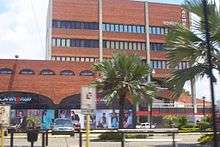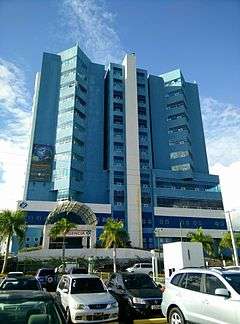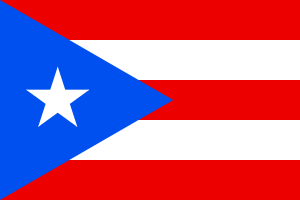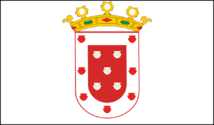Santiago de los Caballeros
| Santiago de los Treinta Cabelleros Santiago | |||
|---|---|---|---|
| City | |||
 | |||
| |||
|
Motto: English, The Heart City, The first Santiago of America; In Spanish, La ciudad corazón, Primer Santiago de America | |||
 Santiago de los Treinta Cabelleros Location in the Dominican Republic | |||
| Coordinates: 19°28′N 70°42′W / 19.467°N 70.700°WCoordinates: 19°28′N 70°42′W / 19.467°N 70.700°W | |||
| Country |
| ||
| Province | Santiago | ||
| Municipality | Santiago de los Caballeros | ||
| Founded | 1495 | ||
| Government | |||
| • Mayor | Abel Martínez | ||
| • Senator | Julio Cesar Valentin | ||
| Area | |||
| • Total | 524.01 km2 (202.32 sq mi) | ||
| Elevation[1] | 175 m (574 ft) | ||
| Population (December 2010 −IX Census)[2] | |||
| • Total | 1,391,262 | ||
| • Density | 2,700/km2 (6,900/sq mi) | ||
| • Urban | 1,550,753 | ||
| • Demonym | Spanish: masculine: Santiaguero / feminine: Santiaguera | ||
| Municipal districts | 5 | ||
| Website | Ayuntamiento de Santiago | ||
Santiago de los Treinta Cabelleros or simply Santiago (English: Saint James of the Knights) is the second-largest city in the Dominican Republic, and the fourth-largest city in the Caribbean. It is the capital of the Santiago Province and the major metropolis in the north-central region of the country. Its urban population reaches 1,550,753 inhabitants, and if rural areas are included its population rises to 1,971,087.[3] Santiago is located approximately 155 km (96 mi) northwest of Santo Domingo with an average altitude of 178 meters (584 ft).
Founded in 1495 during the first wave of European settlement in the New World, the city is the "first Santiago of the Americas".[4] Today the city is one of the Dominican Republic's cultural, political, industrial, and financial centers. Due to its location in the fertile Cibao Valley it has a robust agricultural sector and is a leading exporter of rum, textiles, and cigars.[5] Santiago is known as "La Ciudad Corazón" (the "Heartland City").[6]
History
The colony originally was located in the city of Jacagua, which was founded in 1495, but when it was destroyed by an earthquake it was moved to its current location in 1506. In granting in 1508 the Royal Privilege of Concession de Armas to the Villa de Santiago of Hispaniola, the heraldic emblem that was included in his shield was venerated. The royal decree signed by King Ferdinand as administrator of the kingdoms of his daughter Joanna I of Castile.
The city was devastated by another earthquake in 1562. The survivors settled on land belonging to Petronila Jáquez of Minaya, adjacent to the Yaque del Norte, which is the current location of the city's river. The domination of the French during the Peace of Basel (which yielded the Spanish part of the island to France in 1795) left its mark on Santiago. During this era Santiago began its modern urban planning. European neoclassicism is represented at the Palace Hall, built between 1892 and 1895, by a Belgian architect named Louis Bogaert. The Victorian era was the zenith of architecture in the city. Numerous residences were built in this European style, which makes up the historic center of Santiago.
Santiago de los Caballeros has historically been the capital of the country, and was an important strategic city in the Dominican War of Independence. The name of the city, Saint James of the Knights refers to the Hidalgos de la Isabela, a group of knights who had come from La Isabela city to stay in Santiago. When they got back to Spain they put a formal complaint before the king stating that their horses had been unfairly commissioned as beasts of burden and their weapons had been appropriated by the Columbus brothers (Diego and Bartolomew) and that they had been made to do manual labor, something considered beneath their station as knights, who were meant to engage only in battle. Sometimes the city is called Santiago de los 30 Caballeros (English: Saint James of the 30 Knights).
Geography
Santiago de los Caballeros is located on a hilly terrain in the middle of the Cibao Valley in the Central Region of the Dominican Republic, one of the most fertile lands found in the island. The Yaque del Norte River passes by Santiago which is in between the Cordillera Central and the Cordillera Septentrional, two of the three major mountain ranges on the island of Hispaniola, forming the Cibao Valley.
Climate
Santiago features a tropical wet and dry climate under the Köppen climate classification. The average temperature varies little in the city, because the tropical trade winds help mitigate the heat and humidity throughout the year. December and January are the coolest months and July and August are the warmest. Santiago and the rest of the country are in the Caribbean and have a tropical climate, which, when coupled with the city's altitude, 183 meters above sea level, causes cloudy conditions to persist through much of the year. Whilst the city lies within the Hurricane belt, Santiago is more sheltered than other parts of the country from hurricanes because of its location in the Cibao Valley.
| Month | Jan | Feb | Mar | Apr | May | Jun | Jul | Aug | Sep | Oct | Nov | Dec | Year |
|---|---|---|---|---|---|---|---|---|---|---|---|---|---|
| Record high °C (°F) | 34.4 (93.9) |
34.4 (93.9) |
37.2 (99) |
38.4 (101.1) |
36.2 (97.2) |
37.4 (99.3) |
36.2 (97.2) |
39.0 (102.2) |
41.0 (105.8) |
37.0 (98.6) |
36.8 (98.2) |
34.7 (94.5) |
41.0 (105.8) |
| Average high °C (°F) | 28.8 (83.8) |
29.4 (84.9) |
30.4 (86.7) |
31.2 (88.2) |
31.8 (89.2) |
32.9 (91.2) |
33.0 (91.4) |
33.2 (91.8) |
33.3 (91.9) |
32.4 (90.3) |
30.3 (86.5) |
28.7 (83.7) |
31.3 (88.3) |
| Daily mean °C (°F) | 23.5 (74.3) |
23.8 (74.8) |
24.7 (76.5) |
25.5 (77.9) |
26.5 (79.7) |
27.4 (81.3) |
27.5 (81.5) |
27.7 (81.9) |
27.6 (81.7) |
26.9 (80.4) |
25.2 (77.4) |
23.7 (74.7) |
25.8 (78.4) |
| Average low °C (°F) | 18.2 (64.8) |
18.4 (65.1) |
19.0 (66.2) |
19.9 (67.8) |
21.2 (70.2) |
22.1 (71.8) |
22.2 (72) |
22.2 (72) |
21.9 (71.4) |
21.5 (70.7) |
20.2 (68.4) |
18.7 (65.7) |
20.5 (68.9) |
| Record low °C (°F) | 11.2 (52.2) |
12.2 (54) |
12.0 (53.6) |
12.7 (54.9) |
16.3 (61.3) |
18.5 (65.3) |
17.0 (62.6) |
17.6 (63.7) |
18.6 (65.5) |
17.5 (63.5) |
15.0 (59) |
12.0 (53.6) |
11.2 (52.2) |
| Average rainfall mm (inches) | 49.8 (1.961) |
47.7 (1.878) |
59.2 (2.331) |
104.4 (4.11) |
151.2 (5.953) |
67.6 (2.661) |
56.4 (2.22) |
73.1 (2.878) |
96.8 (3.811) |
109.7 (4.319) |
125.6 (4.945) |
80.2 (3.157) |
1,021.7 (40.224) |
| Average rainy days (≥ 1.0 mm) | 7.4 | 6.2 | 5.7 | 7.9 | 10.5 | 5.6 | 7.2 | 8.0 | 8.1 | 8.7 | 10.7 | 9.8 | 95.8 |
| Average relative humidity (%) | 77.8 | 75.9 | 72.6 | 72.5 | 74.8 | 72.4 | 71.9 | 72.6 | 74.0 | 76.1 | 79.1 | 79.6 | 74.9 |
| Mean monthly sunshine hours | 224 | 202 | 245 | 237 | 243 | 246 | 255 | 263 | 235 | 235 | 212 | 205 | 2,802 |
| Source #1: NOAA,[7] Acqweather (sun)[8] | |||||||||||||
| Source #2: Temperature Extreme Records [9][10][11] | |||||||||||||
Economy
.jpg)
Santiago, as most cities and towns in the Cibao valley, benefits from the fertile lands of this region.[12] This makes Santiago de los Caballeros an important area for farming and livestock. Santiago's industrial sector is also one of the most dynamic in the country. It has the concentration of 15% of domestic industries. This means 308 manufacturing companies, which in 2004 employed more than 14,000 people or 12% of the labor of Dominican manufacturing work. The products range from cigars, coffee, and alcoholic beverages, to concrete, plywood and sheet products.[13]

Santiago is the 2nd largest city in the Dominican Republic after Santo Domingo and currently produces the 2nd highest percentage of the nations GDP. Telecommunications, such as; wireless phones, cable service, internet service and other services are important for the local economy. Tourism, to a lesser extent, also accounts for a portion of the city's economy.
Growth and development
Santiago has recently experienced an era of rapid growth and development. It has become a city of great importance for the nation and the region's development. The approximate population of Santiago is about 691,262 inhabitants (as of 2010).[14]
Arts and culture

Architecture

The Cathedral of Santiago was built in 1895 by Onofre de Lora, an architect native to the city.[15]
The Hermanos Patiño Bridge is both the largest and oldest bridge in the city connecting the North and South sides of the city of Santiago.[16] Its construction was started by Rafael Leónidas Trujillo and inaugurated in 1962, one year after his death. The bridge is named after the five brothers that died in an effort to end Trujillo's regime and dictatorship in the Dominican Republic in the mid 20th century. The anti-Trujillo legacy of the Patiño family did not begin with the brothers, but with their father who was killed in 1931 in the first anti-Trujillo insurrection of the Dominican Republic.[17]
On a hill overlooking Santiago is a 67 meters (220 ft) high marble monument. Construction of the monument began in 1944 on the orders of then-dictator Rafael Trujillo. He named it the "Trujillo's Monument to Peace", and was designed by architect Henry Gazón Bona. Trujillo was assassinated in 1961, after which the monument was renamed the "Monument to the Heroes of the Restoration", in remembrance of the Independence Restoration War of 1863, in which the Dominican Republic regained its independence from Spain.[18]
Sites
Museums

Museums in the city include the Museo Folklórico Yoryi Morel which exhibits Santiago's Carnival culture, and displays some garments worn by lechones of Santiago Province in the Carnival, as well as those worn in other provinces. The museum is named after noted Santiago painter Yoryi Morel. Museo del Tabaco or The Tobacco Museum which shows manufacturing methods as well as the effect of the tobacco plantations along the city's history, the Museo Histórico Fortaleza San Luis or Historic San Luis Fort Museum which previously served as a municipal prison.,[19] the Museo de los Héroes de la Restauración or Restoration Heroes Museum is currently under Construction and houses a display of pictures from the Restoration War from the 1863–1865 battles between the Dominican Government and the Spanish army.[20] and Centro León which displays elements of the Caribbean and Dominican cultures, Natural Dominican History, Native Indian Evolution and Culture.
Sports

As much as the rest of the nation, Santiago residents enjoy baseball and look forward to the Dominican winter season with the local team being the Aguilas Cibaeñas.[21] Besides baseball, basketball is also played at a professional level in the city of Santiago. The institution in charge of organizing these events is the Asociación de Baloncesto de Santiago de los Treinta Caballeros (ABASACA)[22]
Santiago's major baseball and basketball teams are Las Aguilas Cibaeñas and Los Metros de Santiago.
Santiago has two stadiums, and the stadiums are The Estadio Cibao home of the Aguilas Cibaeñas and The Gran Arena del Cibao home of Los Metros De Santiago
The Female Volleyball Team have claimed two bronze medals[23] in the professional Dominican Volleyball League.
In early 2015, there was the official launch of Liga Dominicana de Fútbol in the Dominican Republic. Santiago is the first city in the country to hold a FIFA Certified Stadium,[24] which was built in the campus of the Pontificia Universidad Catolica Madre y Maestra by the construction group Grupo Estrella, and became the home of the major and first city soccer team Cibao FC from Liga Dominicana de Fútbol.
Education
Santiago is home of several universities including Pontificia Universidad Católica Madre y Maestra (PUCMM) and Universidad Tecnológica de Santiago (UTESA). Other higher learning institutions present in Santiago are: Universidad Organización & Método (O&M), Universidad Abierta para Adultos (UAPA), Universidad Nacional Evangélica and one regional campus belonging to the Universidad Autónoma de Santo Domingo
Santiago is also home to a Binational Center, the Centro Cultural Domínico-Americano (CCDA), which founded in 1962 by a group of Dominicans and Americans living in Santiago. At the beginning, the CCDA set about providing English language courses. Later, the library was opened and included the lending of overhead projectors and documentary films. These last two were sponsored by the American Embassy.
CCDA is located on Estrella Sadhalá Avenue. These facilities of the CCDA were opened in July 23, 1962.[25] Throughout its 50 years of existence, the CCDA has taught English language courses, painting classes and manual activities.
Transportation
Santiago has Share taxis (called Carros Públicos or conchos) and private and independent bus owners who form their own routes according to their demands
The city has private bus transportation to other cities. Bus companies include Dioni, Metro, Caribe Tours, Transporte Espinal, Aetra Bus.
The Autopista Juan Pablo Duarte highway, officially known as DR-1, passes by the city center and connects the city directly to Santo Domingo. Other minor highways connect the city to Puerto Plata, Samana, and the northwestern region of the country.
The Cibao International Airport serves mostly Dominicans living in the United States and other Caribbean islands like Cuba, Turks and Caicos Islands, Puerto Rico and Panama.[26] The former airport of the city was the Santiago Municipal Airport, a regional airport that closed in March 2002. It served destinations such as San Juan, Port-au-Prince, Miami and Santo Domingo with regular services.
Health
Facilities include Cabral y Baez, Clínica Corominas, and Union Médica, and Hospital Metropolitano De Santiago which offer their services in the city.

New projects
- Gran Cibao Hotel – 11 stories high, it is the largest hotel in the Cibao region. It has also been an on hold project for several years.
- Light Rail in Santiago – A Light Rail development in the city's metro area has been proposed. If completed it will be the second city In the nation to have a mass transit system and would be 3.4 miles (5.5 km) longer than the Metro of Santo Domingo. The Light Rail will have 12 stops, its route will be from the Cemetery to the Airport. Construction was scheduled to begin in October 2007 but currently the project has been delayed and on Hold.
- Electric "Highway" from Santo Domingo – Santiago's power comes from Puerto Plata, but the government commenced the building of the Electric "Highway" that will feed Santiago electric energy from Santo Domingo's generators. construction started in February 2007.
The industrialists of Santiago have defended the project since it is considered to be a solution to the lack of green spaces suitable for relaxation in the city. Nevertheless, it has been argued that the granting of contracts for the different phases from this project violate the frame of transparency and legality. In the Strategic Plan of Santiago it is indicated that the construction of the Metropolitan Park would increase the Santiagos green area from its currently 1.1% to 4%.
- Santiago Inteligente and Santiago Massive Training Program (SMART)-An initiative launched by Eddy Martinez Manzueta during his tenure at the Center for Exports and Investment of the Dominican Republic (CEI-RD, 2004-2012), and the Plan Estrategico de Santiago seeking to foster the new regional economic development and branding strategy and the promotion of Santiago as a knowledge-based production center in both conventional and emerging sectors, including Health Tourism, ITES-BPO, biotechnology and agro-business, as well as High-value manufacturing and Fashion (textiles and apparel, footwear), among others.
Recreation
Some of the recreational places found in Santiago are:
- Centro Español: located in the Panamericana Avenue, this place is heavily frequented during the summer by Santiago's local population and tourists. Many activities take place in it, such as sports; swimming, basketball, baseball, softball, football, golf, table games, and children summer camps. They also host parties with famous Dominican and international artists. Its access is restricted to registered members only.
- Gurabito Country Club: Another popular club located in Panamericana Avenue, it is another recreational center. They have sports activities, such as baseball and basketball. Parties with Dominican artist take place periodically in this club as well as some pool parties with Dominicans singers. Access is restricted to members only.
- Mundo Acuático: Located in Panamericana Avenue too, is a water theme park. This locale is open to the general public. Renamed from Kaskada Park to Mundo Acuatico.
Notable people from Santiago de los Caballeros
Actors, artists, musicians, writers
- Johnny Pacheco - musician
- Fernando Cabrera (writer) – Dominican poet, visual artist and songwriter
- Aisha Syed Castro – violinist
- Laura García-Godoy - actress
- Eddy Herrera – Merengue singer
- Krisspy – Merengue singer
- Clara Ledesma - painter
- Ñico Lora – Merengue musician
- La Materialista - rapper and actress
- Manny Pérez – actor
- Frank Perozo - actor
- Mu-Kien Adriana Sang - historian, essayist, analyst, politologist and academic
- Luis Vargas – Bachata singer
- Julio Vega Batlle - author and diplomat
- Miguel Vila Luna - architect and paintor
Athletes
- Luis Felipe Lopez - 1st Dominican born player drafted in the 1st round of the 1998 NBA Draft
- José Cabrera – MLB player for the Houston Astros, Atlanta Braves and the Milwaukee Brewers
- José Lima – baseball player
- Julián Tavárez – baseball player
- Ángel Berroa – baseball player
- Luis Polonia – baseball player
- Tony Peña Jr. – baseball player
- Jose Reyes – baseball player for the New York Mets
- Jhonny Peralta – baseball
- Joaquín Benoit – baseball player
- Rafael Belliard-baseball player and cousin of Washington Nationals 2B Ronnie Belliard
- Carlos Almanzar – baseball player
- Carlos Villanueva – MLB player for the Toronto Blue Jays
- Bill Castro–MLB player for the Milwaukee Brewers, New York Yankees, and the Kansas City Royals; pitching coach of the Milwaukee Brewers
- Carlos Gómez – baseball player for the Texas Rangers
- Leonardo Cruz – boxer
- Bernie Castro – baseball player
- Winston Llenas – former baseball player
- Luis Pujols – former baseball player
- Al Alburquerque – baseball player
- Víctor Díaz – baseball player for the Baltimore Orioles
- Franquelis Osoria – baseball player
- Alfredo Simón – baseball player for the Baltimore Orioles
- Francisco Peña – Dominican baseball player for the New York Mets Son of Tony Peña and brother of Tony Peña, Jr.
- Ramón Peña – former baseball relief pitcher and member of the famous baseball Pena family*
- Leo Garcia – former baseball player
- Robinson Checo – former baseball player
- Rudy Hernández – former baseball player
- Luis Silverio – former baseball player who is now a coach
- Carlos Triunfel – baseball for the Seattle Mariners organization
- Hipólito Pichardo – former baseball of the Kansas City Royals, Boston Red Sox and the Houston Astros
- Victor Martinez – IFBB bodybuilder, runner-up many years for Mr. Olympia
- Marcos Diplan - Major League Baseball pitcher
- Victor Estrella Burgos - Tennis player, first Dominican to win an ATP tournament, first Dominican on the ATP top 100
- Delvin Rodriquez, Jr. - middleweight boxer
- Adriano (Nani) Marrero- light welterweight boxer
- Alejandro Vasquez Colon- Retired NFL Player Tampa Bay Buccaneers, Indianapolis Colts, Baltimore Ravens, New York Giants, Denver Broncos,New England Patriots.He is a 3 time Super Bowl Champion
Politicians
- Joaquín Balaguer – Dominican President
- Salvador Jorge Blanco – Dominican President, lawyer and a writer
- Rafael Filiberto Bonnelly – Dominican President, lawyer, scholar and diplomat
- Ulises Francisco Espaillat - Dominican President, and author
- Rafael Estrella Ureña - Dominican President
- Antonio Guzmán Fernández – Dominican President
- Hipólito Mejía – Dominican President
Francisco Augusto Lora - Dominican Vice President, Ambassador to Washington, USA, lawyer
Other
- Miguel Cocco
- Martha Heredia – Latin American Idol
- Amelia Vega – Miss Dominican Republic 2002, Miss Universe 2003
- Mons. Agripino Núñez Collado – former rector of Pontificia Universidad Católica Madre y Maestra (1970 - 2015)
- Clarissa Molina - Miss Dominican Republic 2015 - Nuestra Bellaza Latina VIP 2016
Twin towns – sister cities
Santiago has twinning agreements with the following sister cities:
 Fort Myers, FL (United States)
Fort Myers, FL (United States) Havana (Cuba)
Havana (Cuba) Santiago de Compostela (Spain)
Santiago de Compostela (Spain) San Juan, PR (United States)
San Juan, PR (United States)  Mayagüez, PR (United States)
Mayagüez, PR (United States)
Photo gallery
 Houses in Santiago's Old Historic Center
Houses in Santiago's Old Historic Center Nuestra Señora de la Altagracia Catholic Church
Nuestra Señora de la Altagracia Catholic Church Gran Teatro del Cibao
Gran Teatro del Cibao A view of the Northeastern section of Santiago
A view of the Northeastern section of Santiago Palacio de los Deportes
Palacio de los Deportes
See also
- Santiago Province
- Cibao region
- List of cities in the Dominican Republic
- Dominican War of Independence
- History of the Dominican Republic
References
- ↑ De la Fuente, Santiago (1976). Geografía Dominicana (in Spanish). Santo Domingo, Dominican Republic: Editora Colegial Quisqueyana.
- ↑ Ayuntamiento de Santiago de los Caballeros (13 July 2011). "Datos Demográficos". Ayuntamientosantiagord.com. Retrieved 4 November 2011.
- ↑ Staff writers (22 August 2007). "Dominican Republic Central Regigon". Ministry of Tourism. Archived from the original on 22 November 2007. Retrieved 22 August 2007.
- ↑ Ultimate Handbook Guide to Santiago De Los Caballeros.
- ↑ "Dominican Dominance".
- ↑ http://search.proquest.com/docview/197735469
- ↑ "Santiago, Dominican Republic Climate Normals 1961-1990". National Oceanic and Atmospheric Administration. Retrieved December 24, 2012.
- ↑ "Normales Climatológicas" (in Spanish). Acqweather. Retrieved September 21, 2016.
- ↑ "Archived copy" (PDF). Archived from the original (PDF) on 2011-10-08. Retrieved 2011-10-03. ONAMET/ National Bureau of Meteorology (Recorded on September 13, 1960)
- ↑ EFEMÉRIDES METEOROLÓGICAS DOMINICANAS (Recorded on January 31, 1987)
- ↑ Ogimet.com (Recorded on March 9, 2010)
- ↑ The Caribbean.
- ↑ "La economía de Santiago de los Caballeros".
- ↑ http://one.gob.do/themes/one/dmdocuments/TMC/Santiago/Santiago.pdf
- ↑ "Iglesia Catedral Santiago Apostol El Mayor". Archivohistorico.santiagodominicana.com. Retrieved 4 November 2011.
- ↑ "PUENTE HERMANOS PATIÑO".
- ↑ "Puente Hermanos Patiño". Archivohistorico.santiagodominicana.com. Retrieved 4 November 2011.
- ↑ "Monumento a los Heroes de la Restauración". Archivohistorico.santiagodominicana.com. Retrieved 4 November 2011.
- ↑ "Museo Cultural Fortaleza San Luis, Santiago, República Dominicana". Livio.com. Retrieved 4 November 2011.
- ↑ Archived August 20, 2007, at the Wayback Machine.
- ↑ "at". Aguilascibaenas.net. Retrieved 4 November 2011.
- ↑ "www.lainformacionrd.net". lainformacionrd.net. 30 October 2011. Retrieved 4 November 2011.
- ↑ Archived April 10, 2010, at the Wayback Machine.
- ↑ "Estadio de la PUCMM para el Cibao Fútbol Cibao está casi terminado". El Caribe. Retrieved 2015-11-20.
- ↑ http://ccda.edu.do/web/nosotros/
- ↑ Archived August 7, 2007, at the Wayback Machine.
Venyve.com Venyve.com Santiago de los caballeros
External links
| Wikimedia Commons has media related to Santiago de los Caballeros. |

